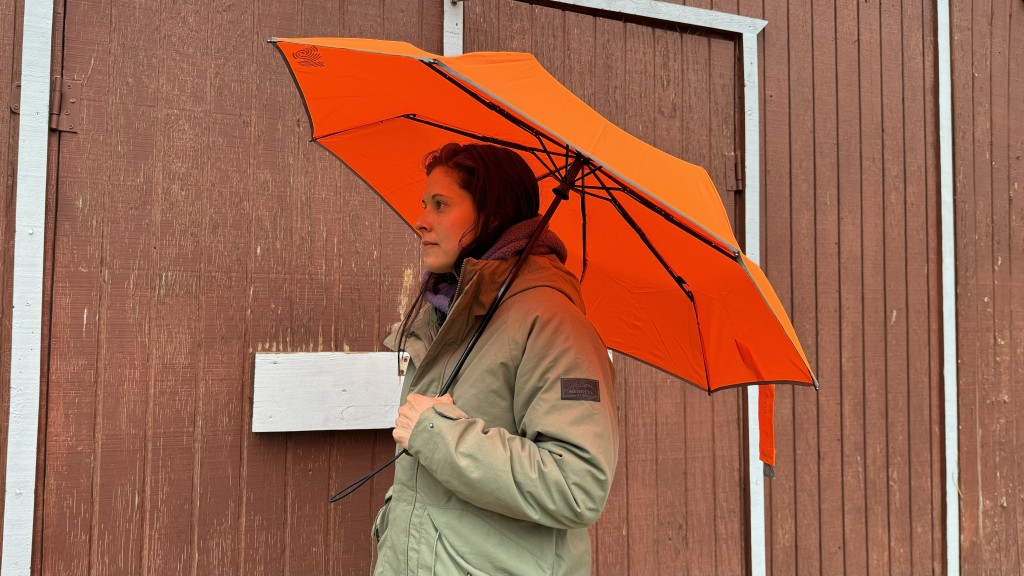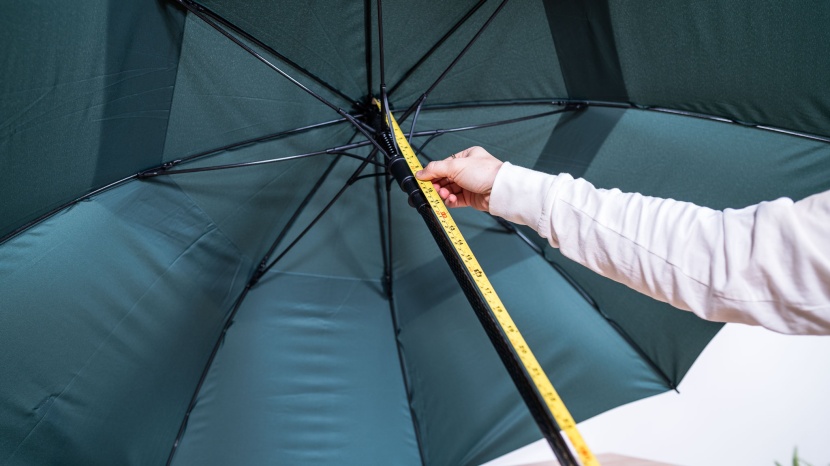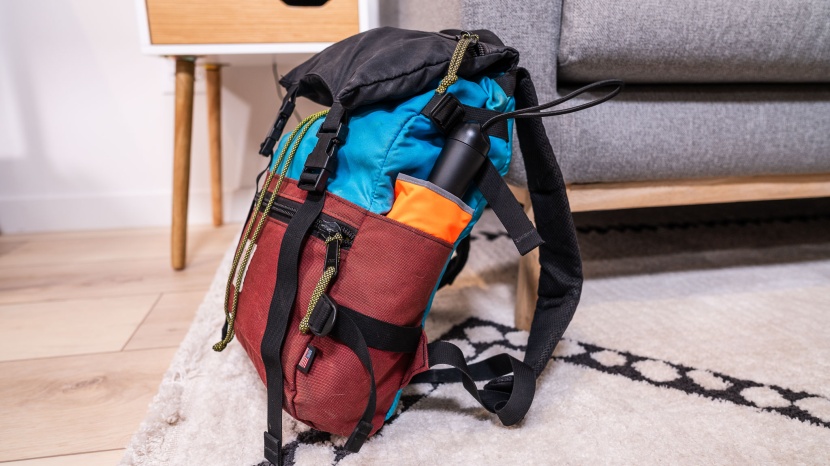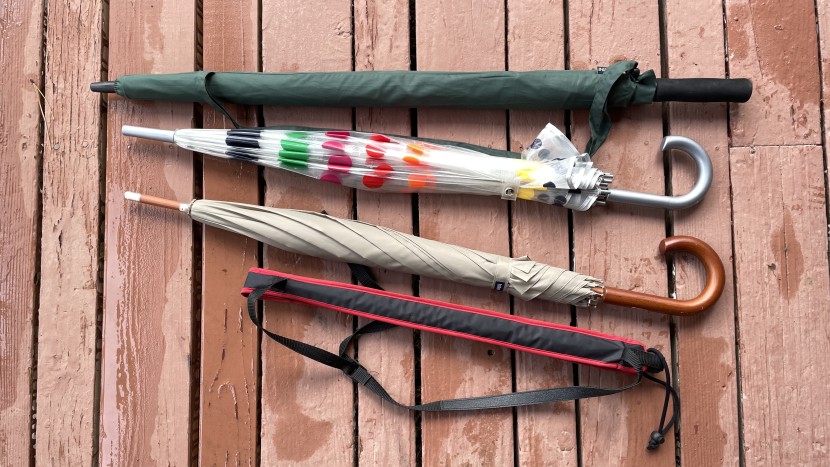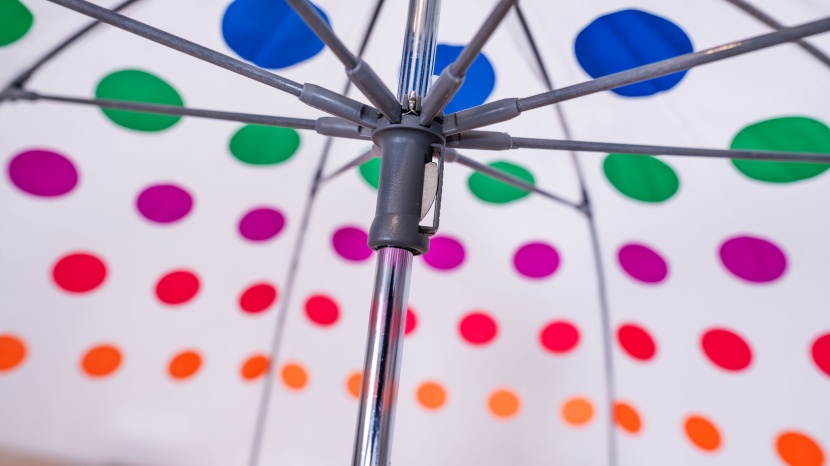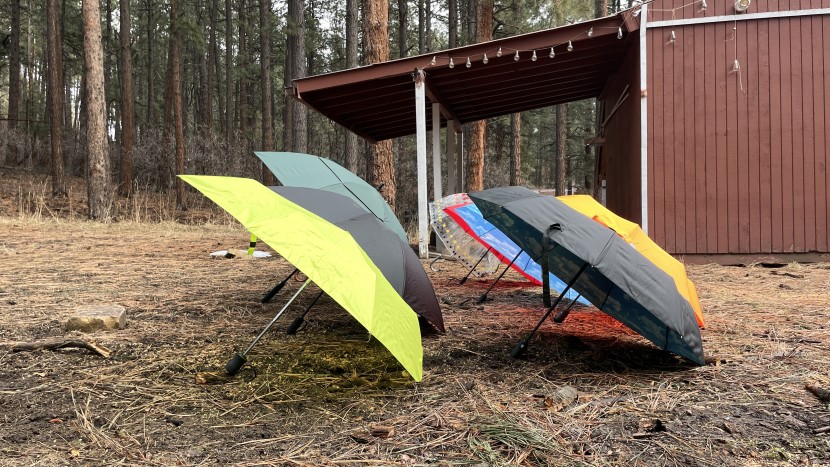Our testers have used these products on rainy commutes into Seattle, hiking through urban parks, in the foothills of the Rocky Mountains, and even on backcountry ski outings in springtime slush storms.
While most of the models in this review are explicitly for rain, a few have quirks that allow for greater versatility, such as for high-wind events or ease of use in the sun. We acknowledge that some people like to use umbrellas in a variety of manners, so we kept this in mind when establishing and engaging with our testing methods.
Rain Protection
We standardized our test for rain protection by taking laps around our local neighborhood or park, clear and open to the dripping sky, with each umbrella. This allowed us to assess each product's realistic rain protection properties in the same conditions. We made notes between each lap, paying attention to where we felt the threshold was in the exposure of our upper body to the elements. In addition, we hosed down each umbrella to simulate a downpour with greater water pressure to see how they held up.
We also noted how the wind seemed to catch or affect the balance of each model. Then, we conducted a formal wind test by holding each out the passenger window of a vehicle and slowly speeding up until the canopy collapsed or otherwise became unmanageable. Next, we repeated the test with the canopy angled to catch the wind and determine the wind speed at which it would invert.
Technical measurements were made as well, such as canopy diameter and depth. We use these measurements instead of “arc length,” which is often reported by manufacturers. We find that arc length can be misleading since it says nothing about the angle of the arc. With diameter and depth, you can better envision the shape and size of each canopy and, therefore, its approximate coverage.
Ease of Transport
We carried all of these products in various ways: in backpacks, handbags, on back seats, in our bare hands, and even in the occasional back pocket. Additionally, we weighed each model and measured the packed length in its sleeve (if it came with one). We also took note of helpful perks such as leashes or short lanyards attached to the handles. If you're going to be toting these things around a lot, it's nice to know the dimensions of what you're dealing with. These details also contribute to the umbrella's overall appeal and ease of use.
Construction Quality
During general use, we pay attention to how the canopy material feels and looks over time. We also put each model through a standardized test of opening and closing them 30 times in a row, taking note of any squeaks that arose or a change in the flow of the mechanism. Our wind testing also plays a part in testing quality by seeing how the structures of the umbrellas stand up to these more extreme circumstances. Scores are based on proven functionality, general durability during the testing period, the quality of manufacturing, and the materials used.
Ease of Use
For this metric, we mainly consider the operating mechanism itself. If automatic features are built into the design, such as buttons that deploy the canopy, we note how easy or practical such features are. In tandem with the test of opening and closing each one dozens of times in a row, we get a good feel for the mechanics and the overall vibe of the product. More often than not, the manually operated umbrellas tend to be the most fluid and don't require a ton of muscle to collapse again. We also note how easy it is to transition between rain and non-rain settings, such as exiting or entering a vehicle. We also note the practicality of its storage sleeve if it comes with one.
Versatility
While a subjective metric, we first considered the fashion sense of each design and whether or not there is an incentive to use the umbrella for alternate activities, such as in the sun or light hiking. To assess style, we asked others to weigh in on each product (in addition to collecting tester input). Sometimes, the appearance and appeal of an umbrella can completely outweigh its function, but sometimes, looks matter, like when heading to a business meeting with important clients. Compact designs tend to fare well in versatility as they are more likely to be carried around or more likely to be discrete.

